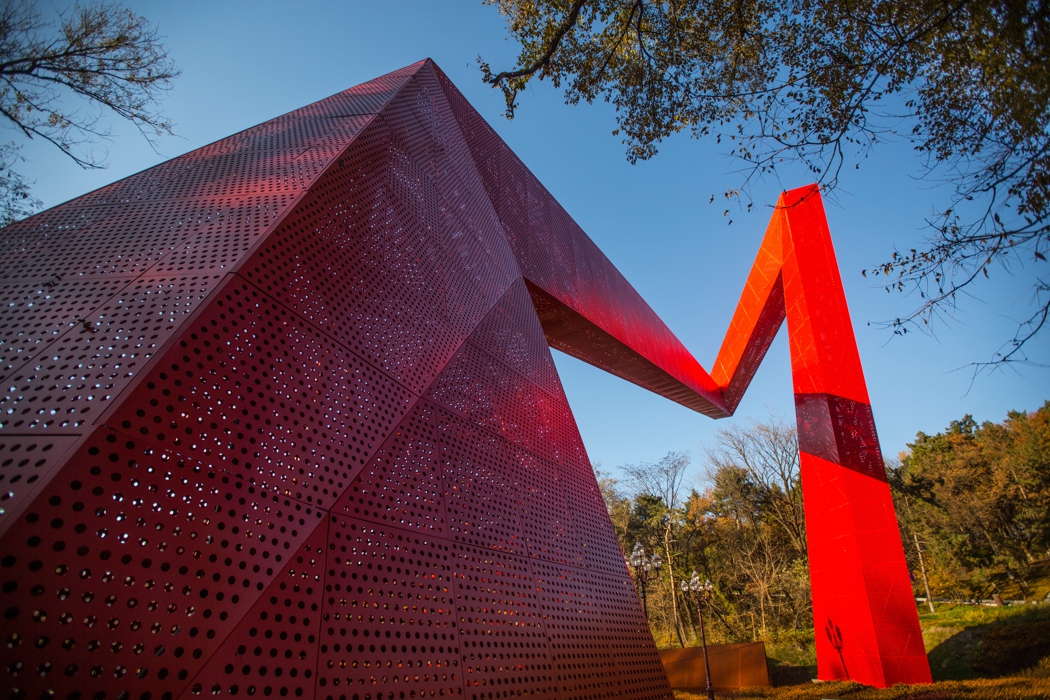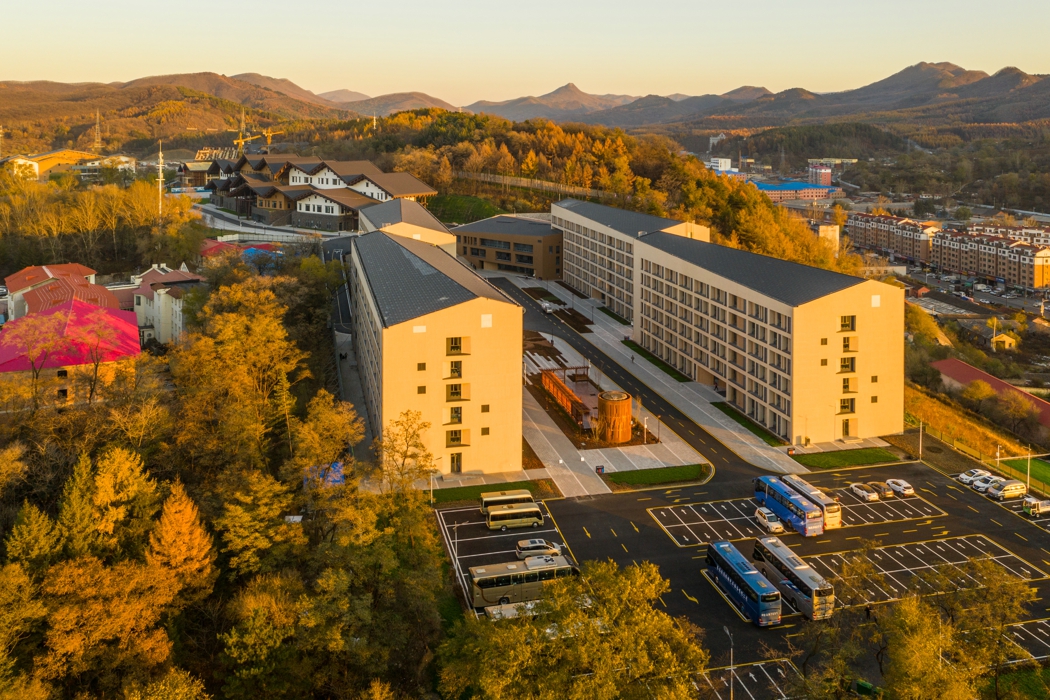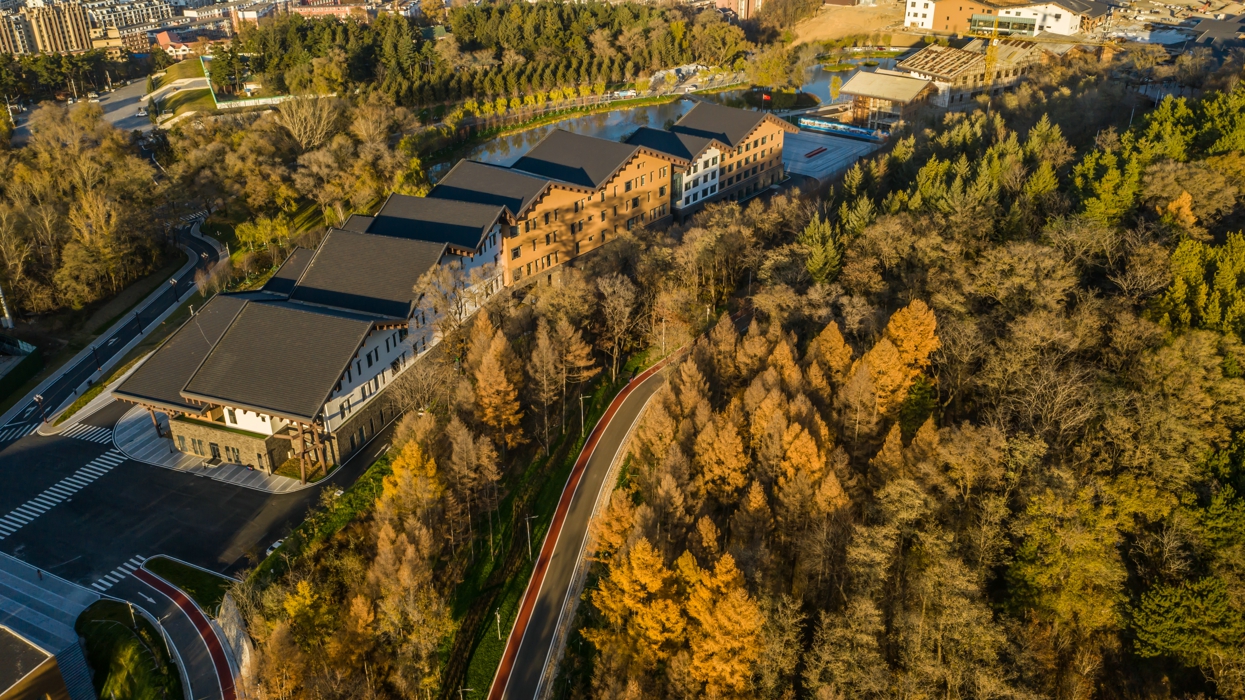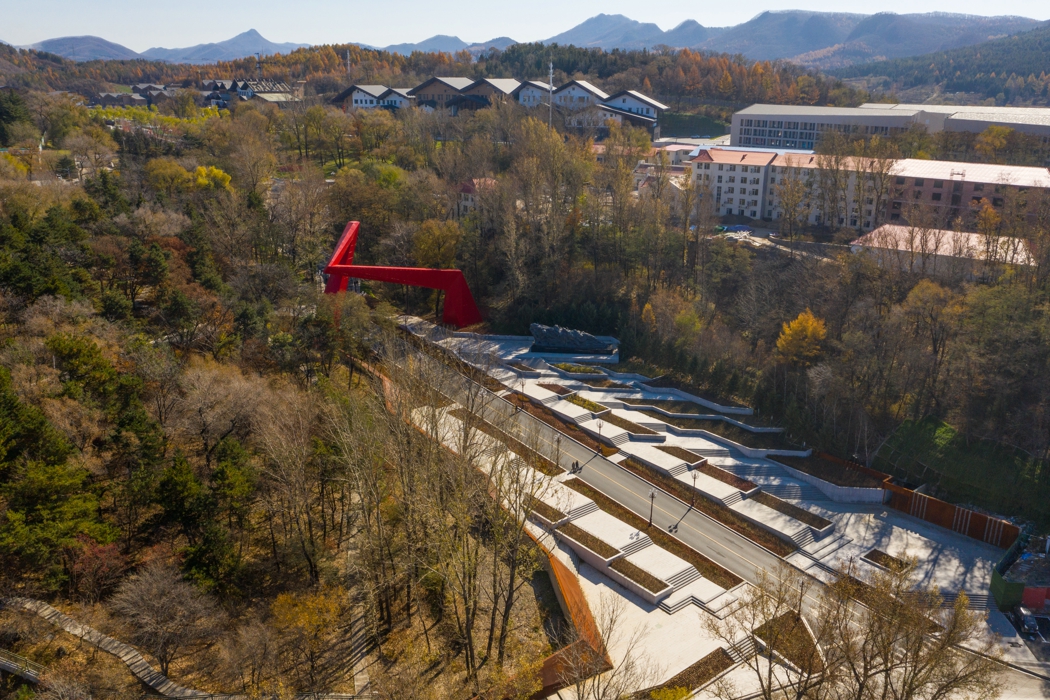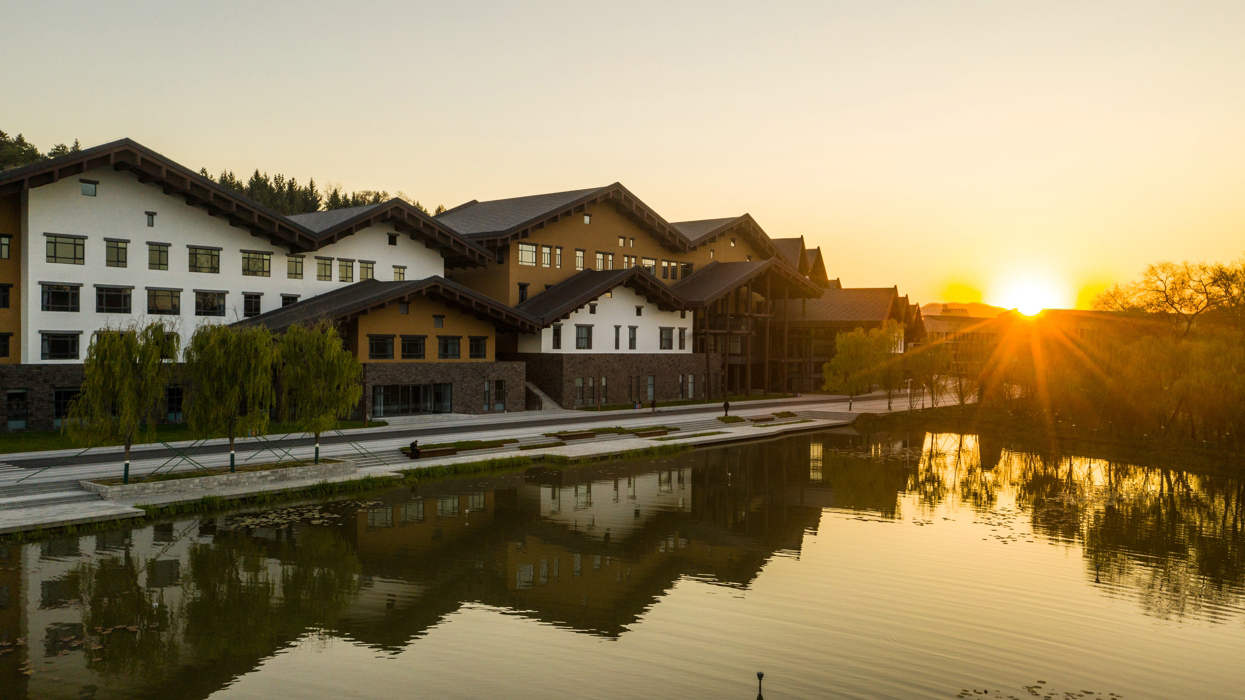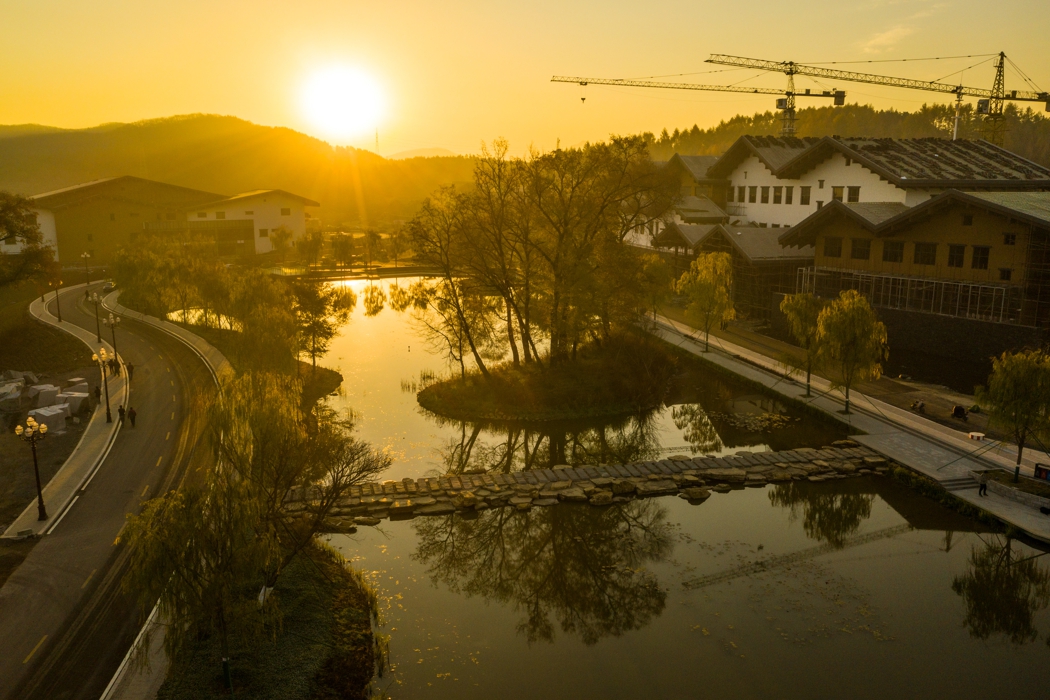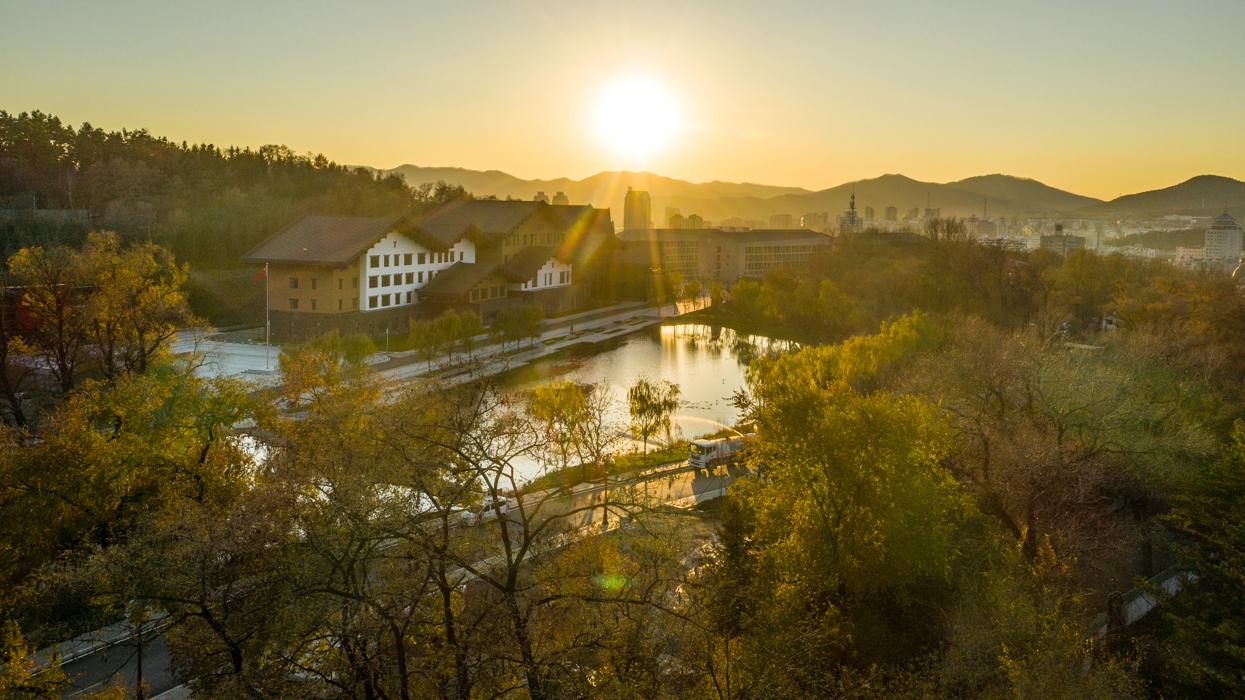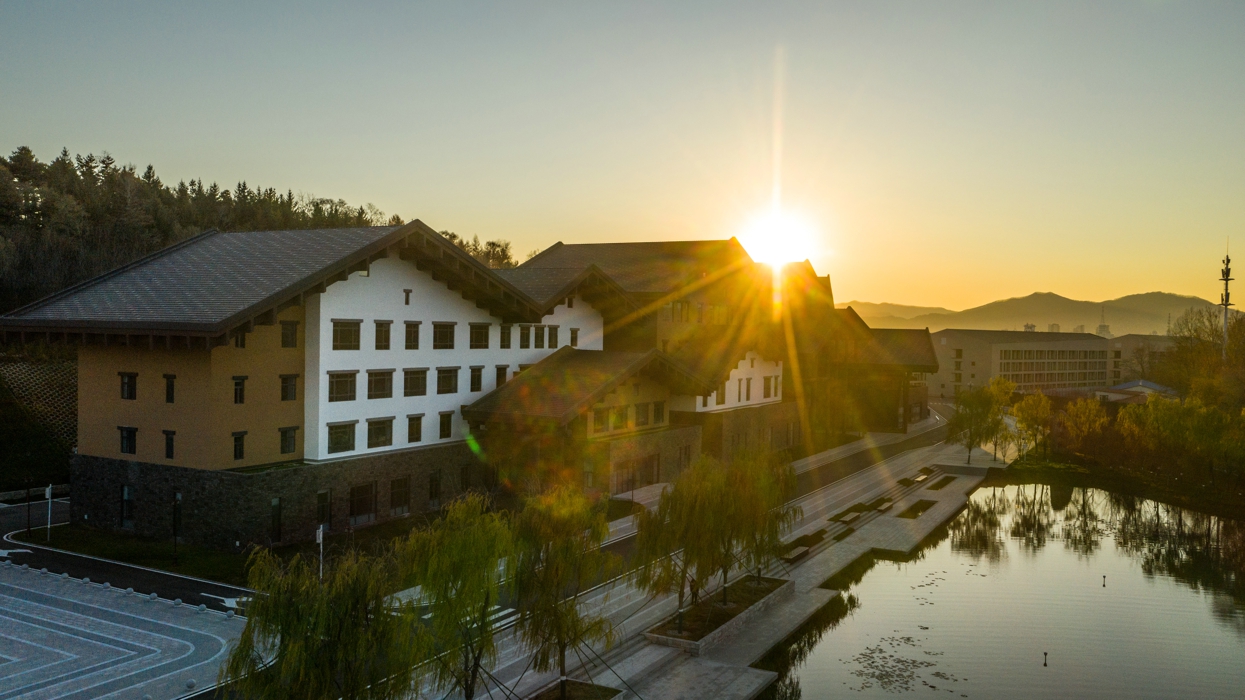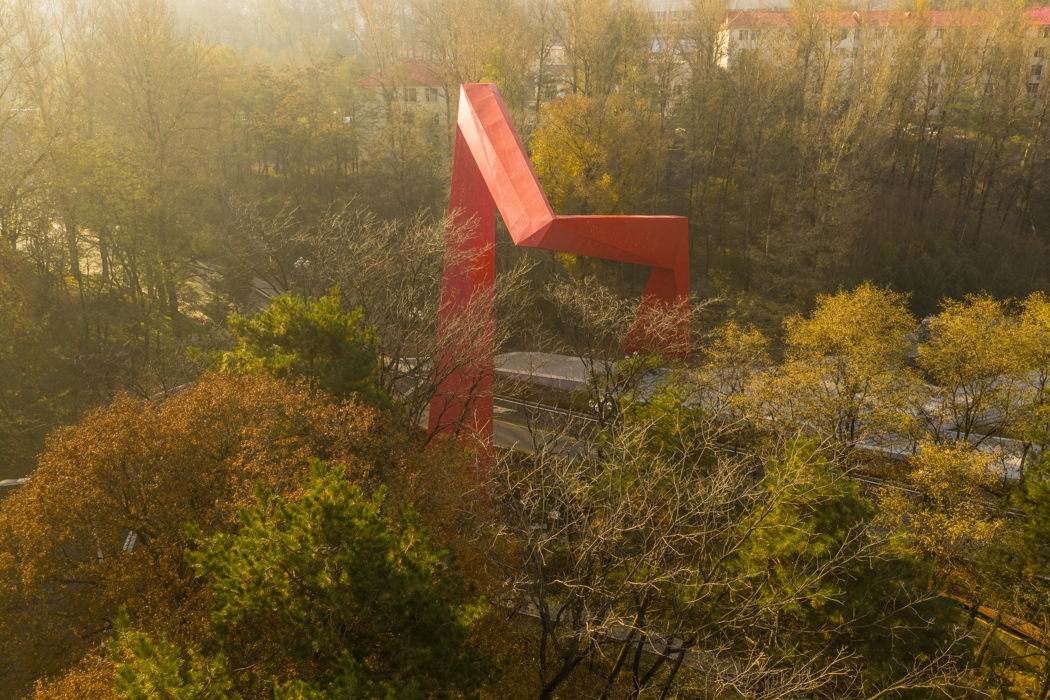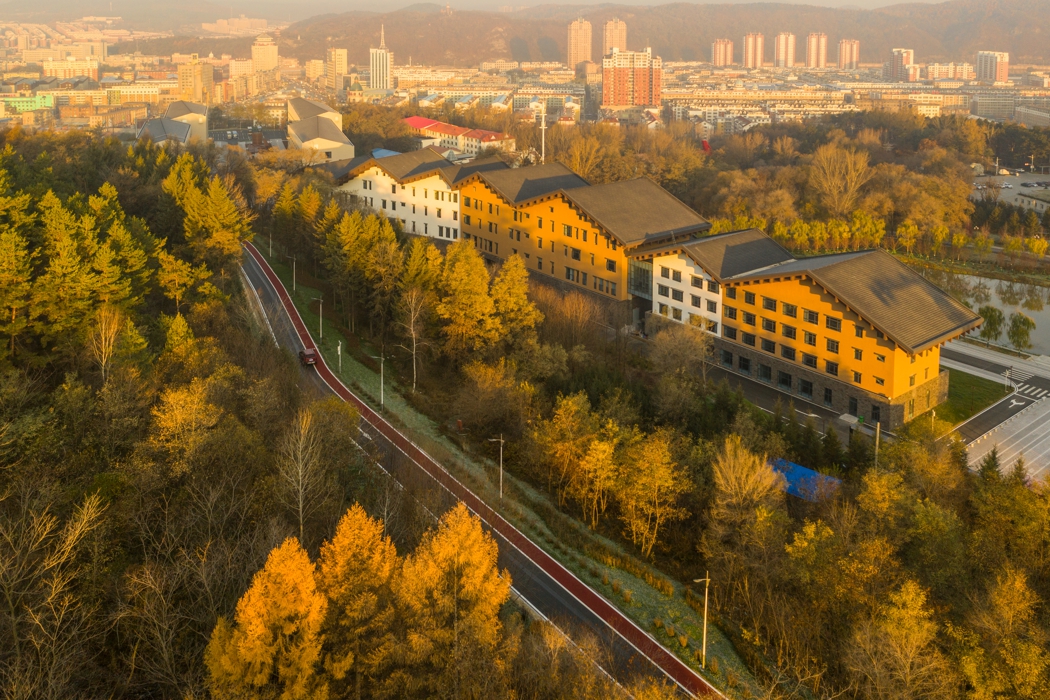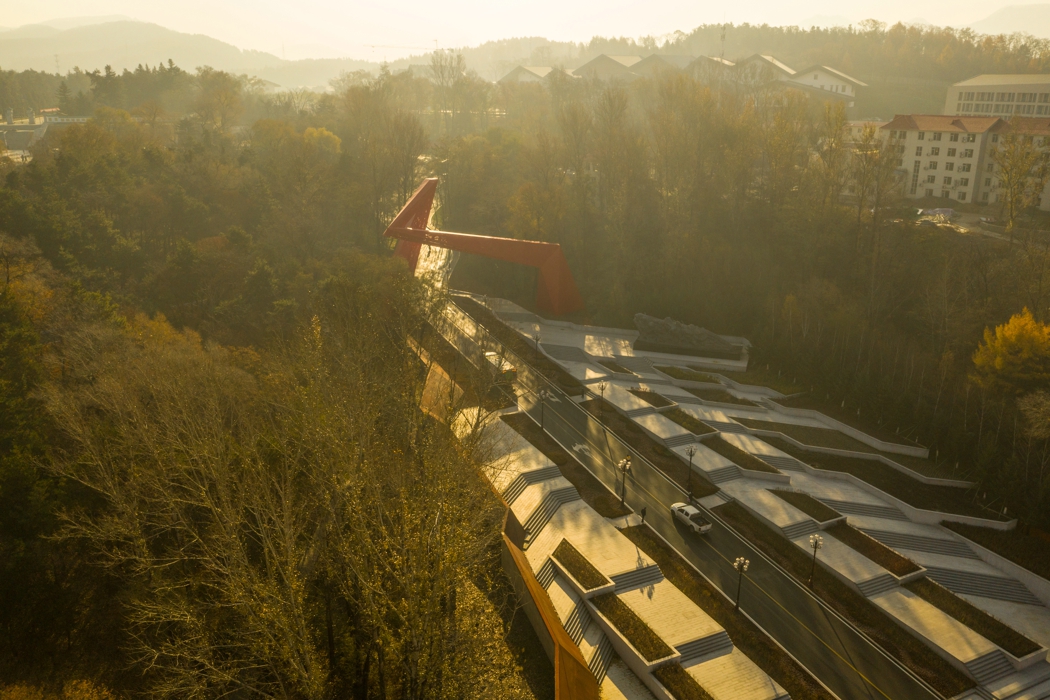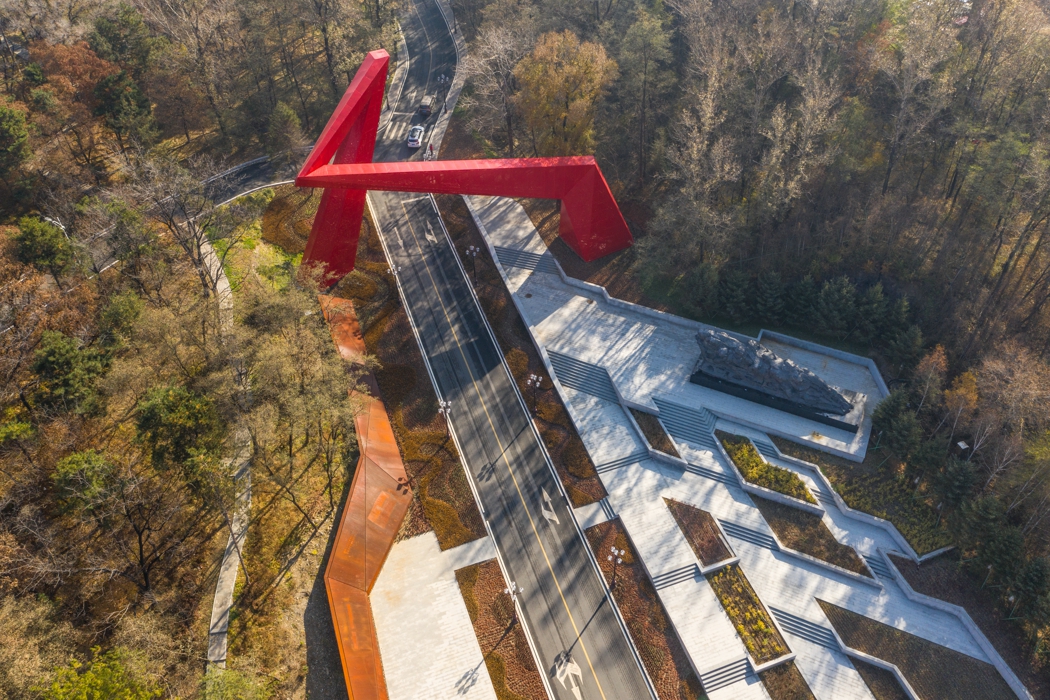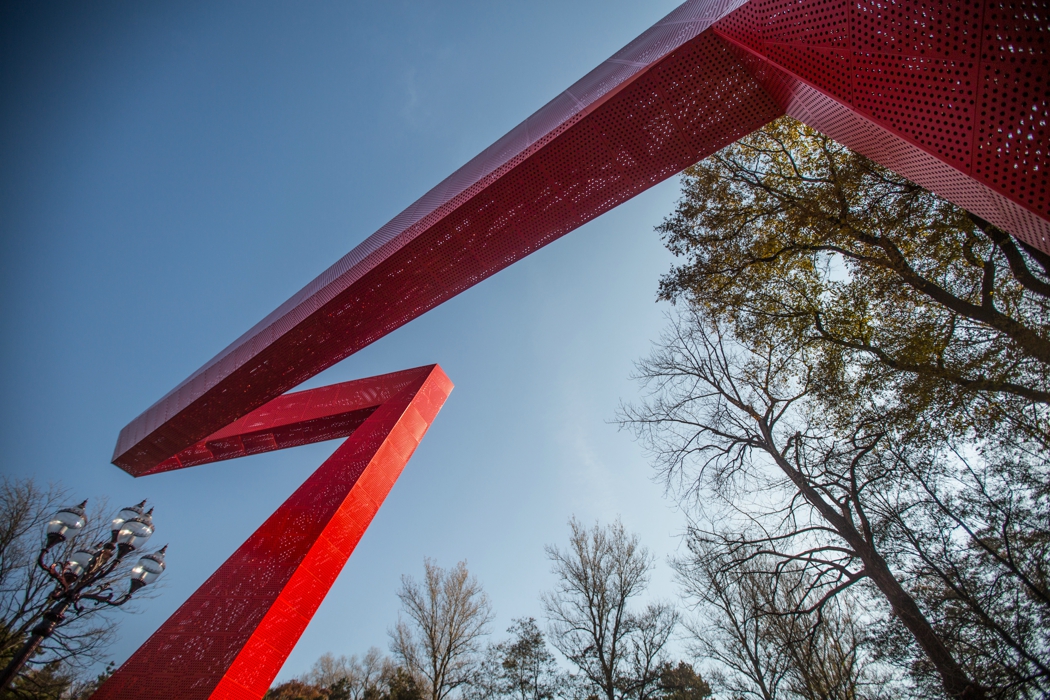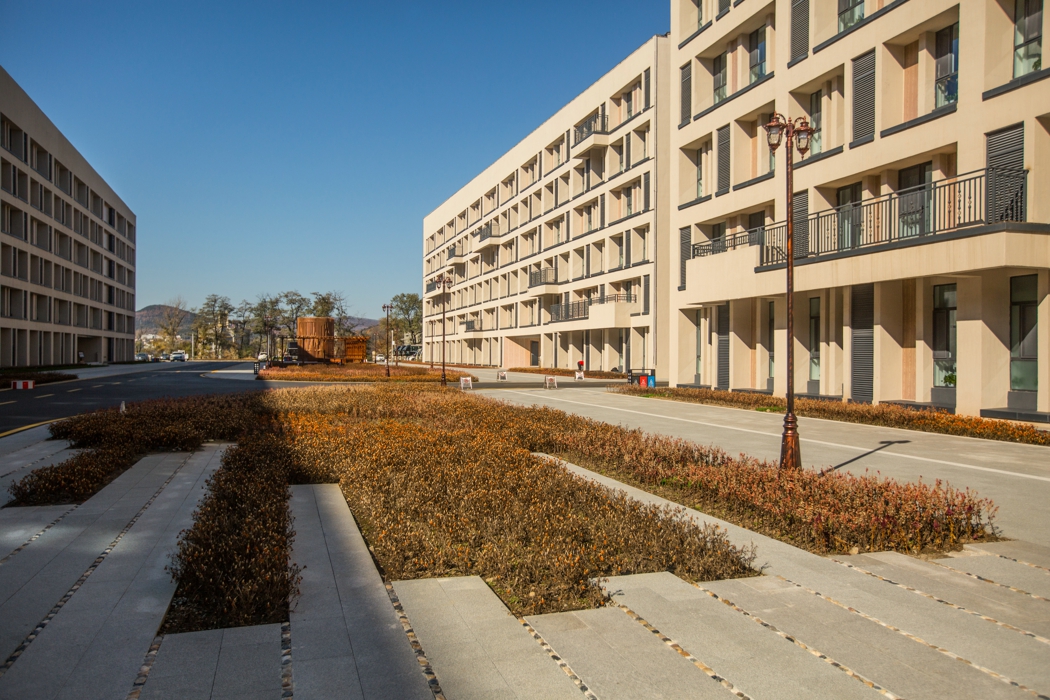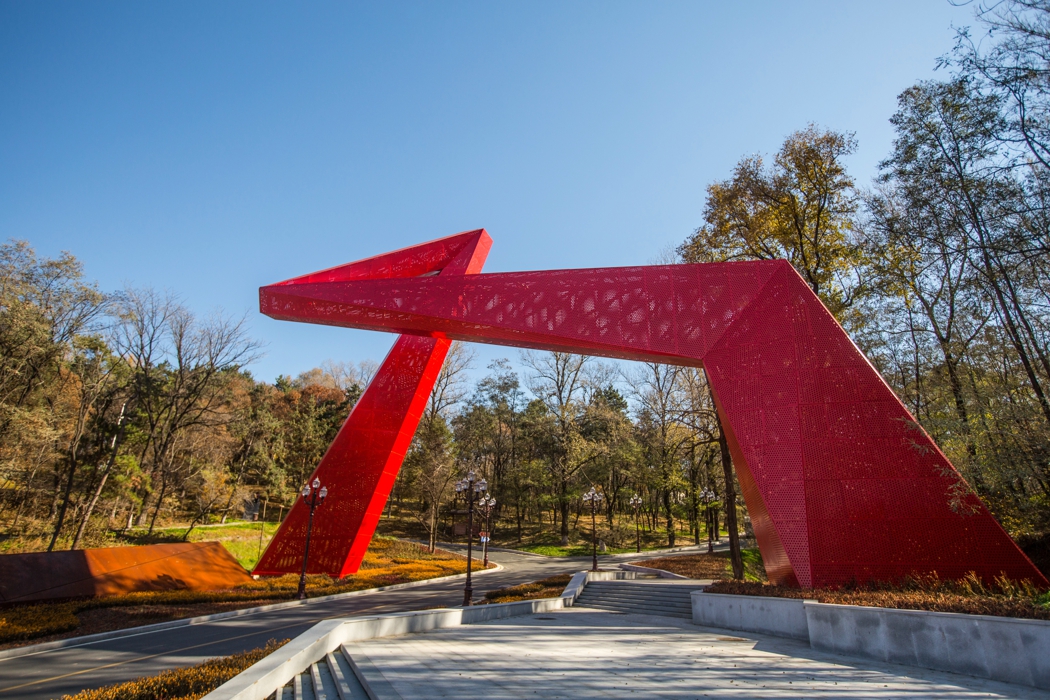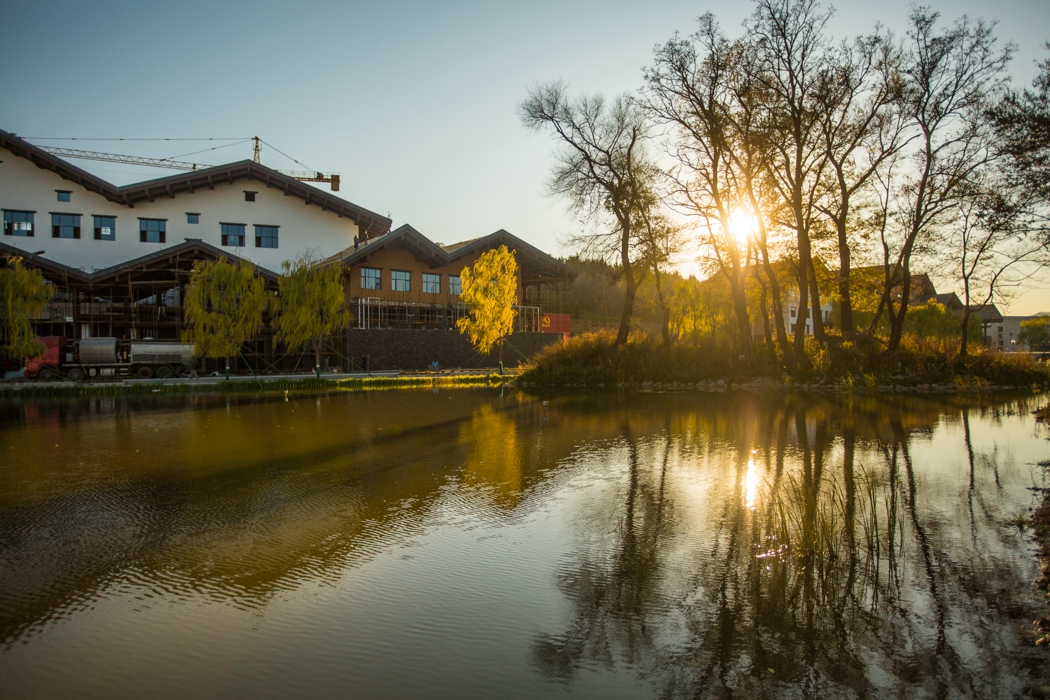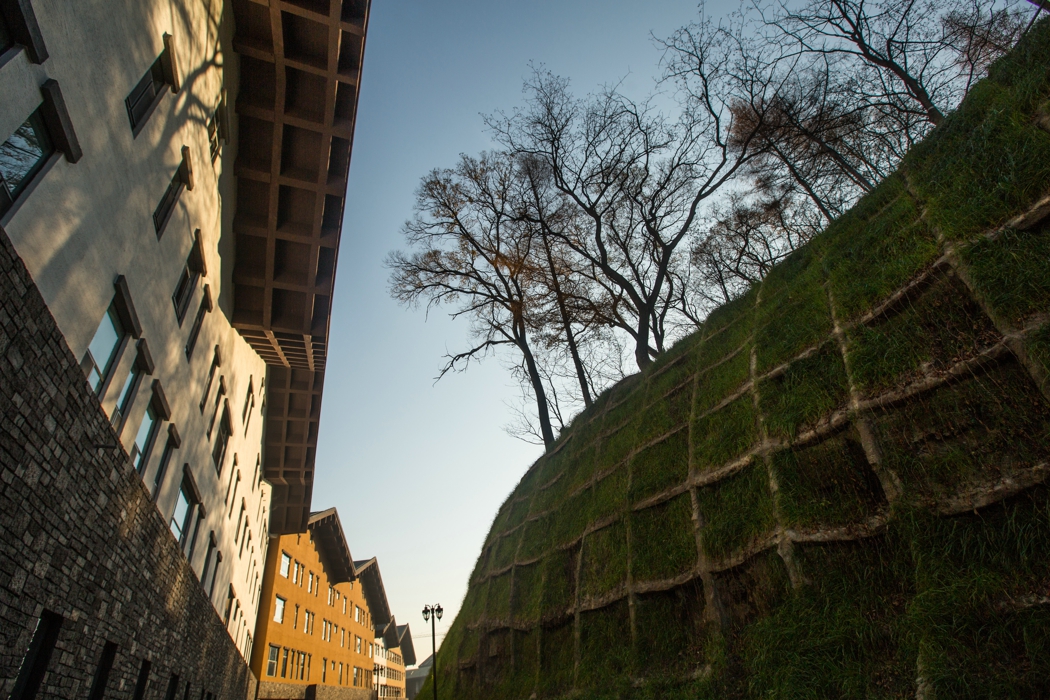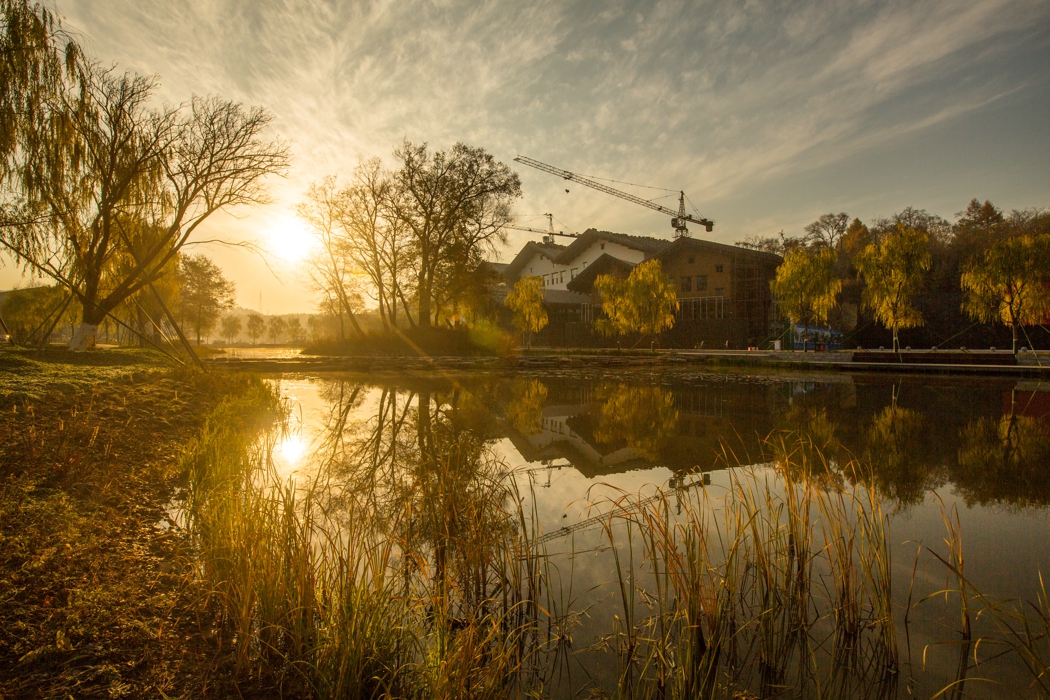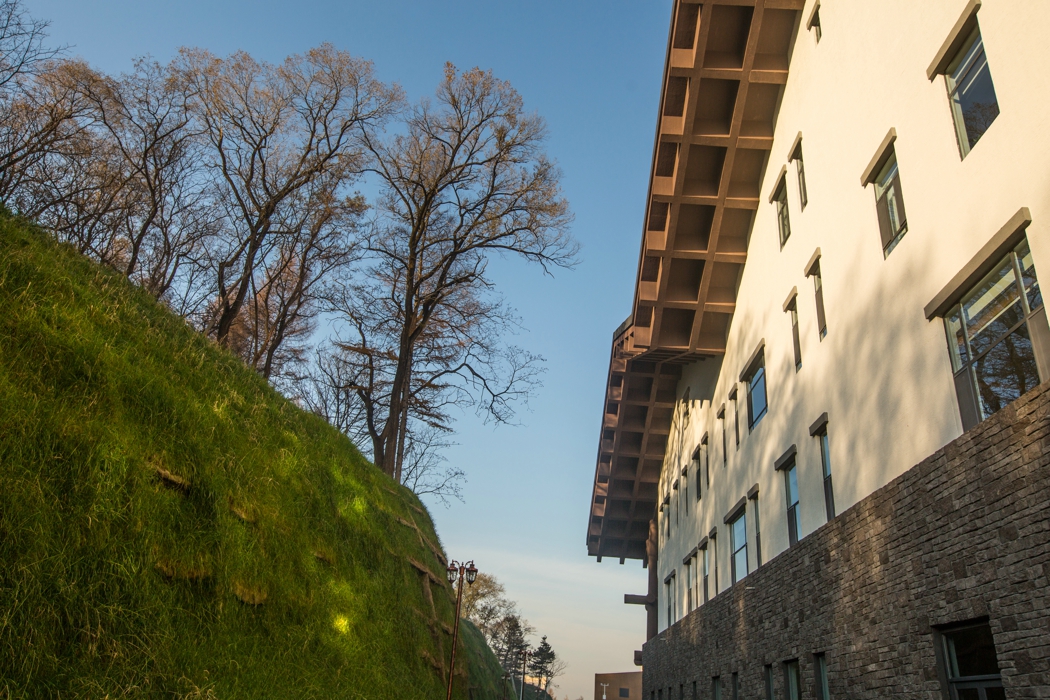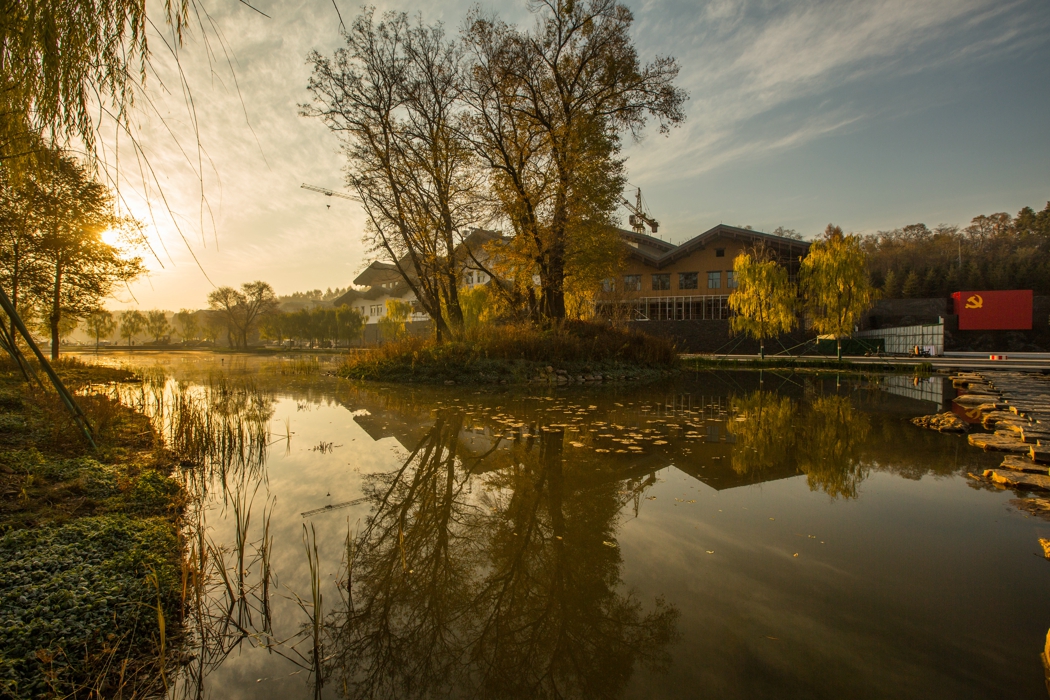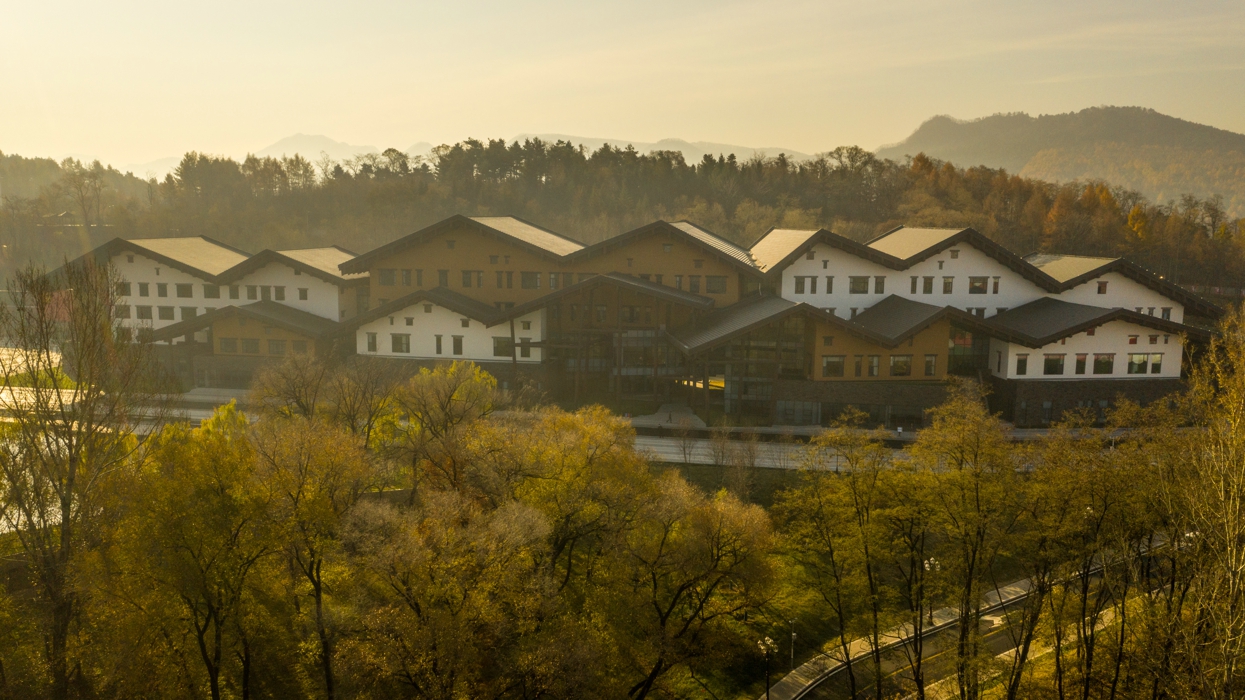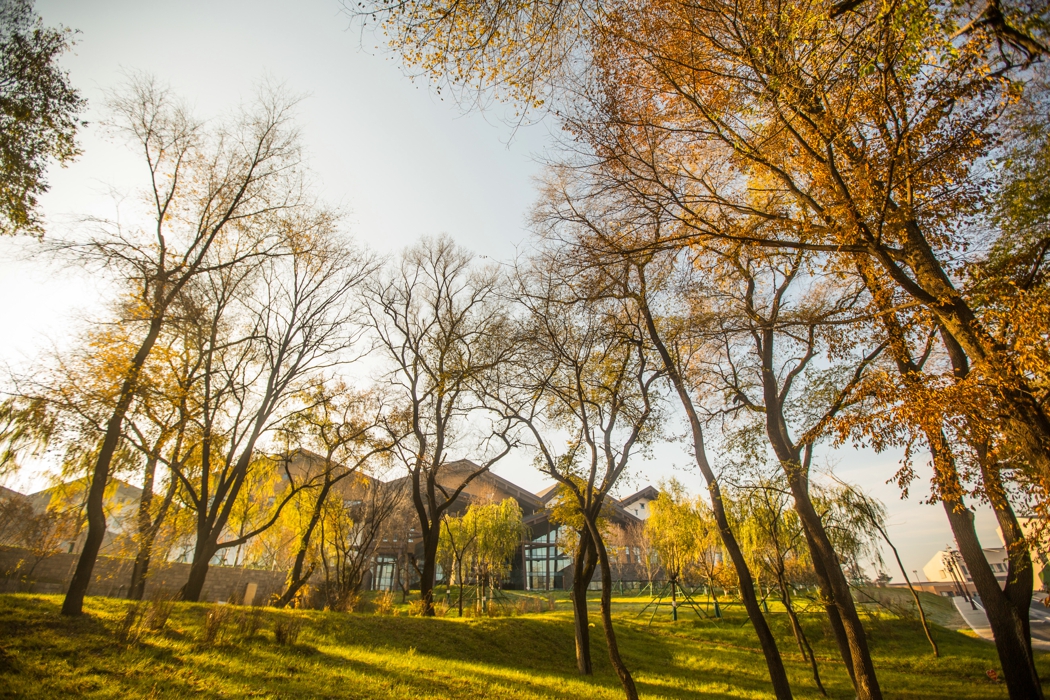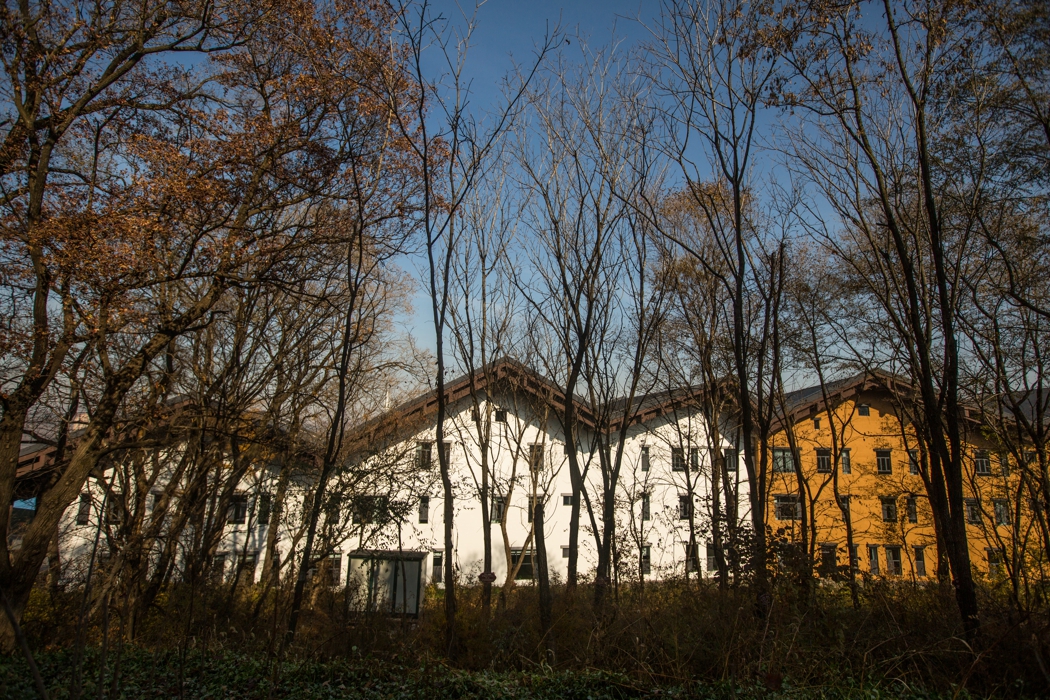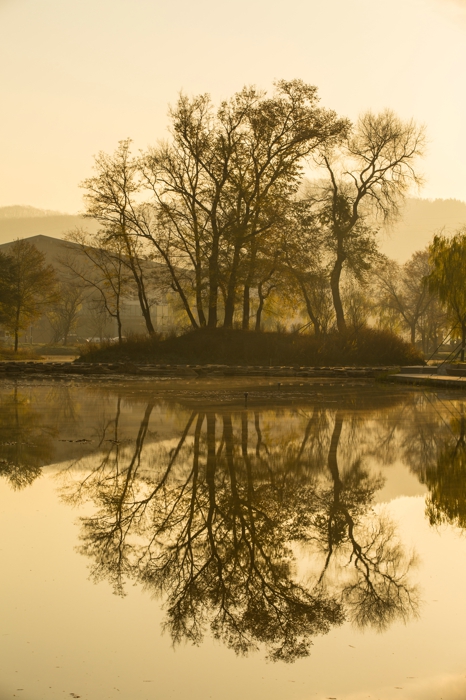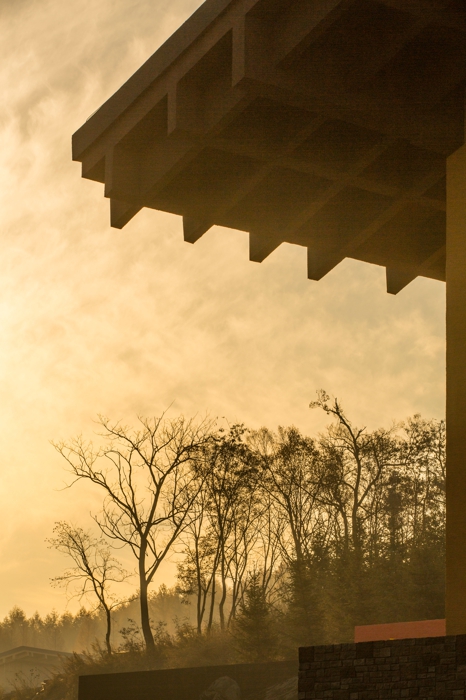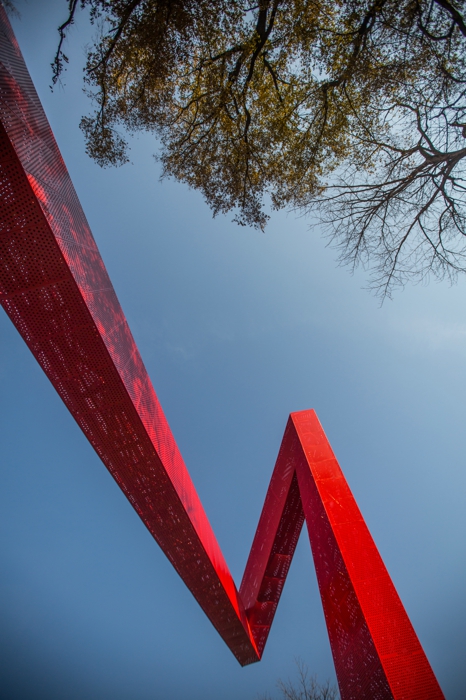Yang Jingyu Education and Training Base in Jilin
Project Information
- Project Location:
- China Tonghua, Jilin
- Project Scale:
- 89.78 Hectares
- Design Time:
- November,2018
- Client:
- Jilin Tonghua Cultural and Tourism Development Group Co., Ltd
Project Profile
1. Project Statement
The project is located on the west side of Longgangshan Forest Park in Tonghua City, in adjacent to Yang Jingyu Cemetery of Revolutionary Matyrs. It is also west to the Tonghua Plaza and faces Nanshan Park to the south. The planning area is about 89.53 hectares. The site celebrates pleasant scenery and lush forests owing to its unique location-its southwest part surrounded by the city and the southeast corner nestles against the mountain.
2. Objective and Challenge
(1) Red education and training
To transform the college into a well-known educational training base for the Party Spirit, patriotism, incorruptible government and national defense education as well as ideological and political education base of the adolescent in China.
(2) United Anti-Japanese Alliance cultural experience
Based on the cultural preservation institution, Jingyu Cemetery, as the core essence, a leading education base in Jilin Province is developed. Take “red culture” as the themed, an anti-Japanese war memorial park is proposed to forge trainees into the red journey of patriotic education.
3. Design Strategy
The landscape design of the college sets on the concept of "Red Institution, Green Campus" and takes respecting for history and nature as the design principle. It comprises of the following three design strategies:
(1) Cultivate the gene of the red ideology, with northeast anti-Japanese union’s spirit as its the soul;
(2) Introduce regional culture elements to highlight the cultural characteristics of Changbai Mountain;
(3) Integrate landscape into nature to reflect the concept of green ecology. To foster the seasonal changes of the forest through preserving and utilizing existing forests as well as after-replacing local plant species. And to transform the campus into a mountain and forest scenery park with unique characteristics.
Using the above strategies to extract the spiritual connotation and memory fragments from the 14 years of anti-Japanese war and thus create a featured landscape through contemporary design languages. To form a unique landscape system that reflects the characteristics of the Northeast Anti-Japanese Alliance.
The college entrance is designed to be the Northeast Anti-Japanese union square. The spatial sequence of the square is enclosed by an Anti-Japanese Alliance cultural wall. Using rusted steel sheets as the main material of the wall, the overall shape of which comes with varying heights and turns. It symbolizes the arduous battle against Japan. The weather resistance of the rusted steel sheets symbolize soilder’s brave and indomitable fighting spirits
The campus gate is located at the pass of mountainside, the overall character of which is and vigorous and complete. Adapted from number "14", which represents the 14-year’s difficult war of resistance against Japanese aggression. Its tall and straight appearance symbolizes Jilin’s geomorphic features of "White Mountains and Black Water".
Stepping up the right stairs of Jingyu Road, one will see a widening space of Jingsi Lake landscape area with the size of a 11,000m2. Jingsi Lake is the largest artificial lake in the college. On the south side of the lake, there are important nodes such as faculty buildings and the Northeast Anti-Japanese Army Exhibition Hall. All of those nodes assemble the core functional area of the college.
The south bank is equipped with riverside walkways and lookouts, which serve as outdoor spaces for students to rest and communicate. There are several tree islands floating in the lake, constructed by local rubble stones. Plants such as locus are planted along the lake banks. Lakes, islands and together with diversified planting of plants create a rich natural habitat and increase biodiversity of the area.
A group of Anti-Japanese soldier’s sculptures are placed in the valley on the east side of the lake, whose portraits are derived from profiles of anti-Japanese heroes, battles and story scenes. Walking through it makes one experience the fighting atmosphere of the anti-Japanese war back then.
4. Conclusion
The landscape design of the college is guided by the concept of “ Red Institution, Green Campus”. The objective is to optimize the advantages of red resources, vigorously promote the spirit of the Northeast Anti-Japanese Army and Yang Jingyu, carry out patriotism education, revolutionary tradition of learning as well as party spirit, party history, and education. The Organisation Committee of the Provincial Party and the Tonghua Municipal Committee party jointly constructed the Yang JingYu Cadre College in two years and transformed the project into a leading Party education base nationally. It was completed under important instructions of the Provincial Party Committee and on-site guide from the Municipal Committee and Organisation department. The project tributes to the 100th anniversary of the founding of the Communist Party of China.
